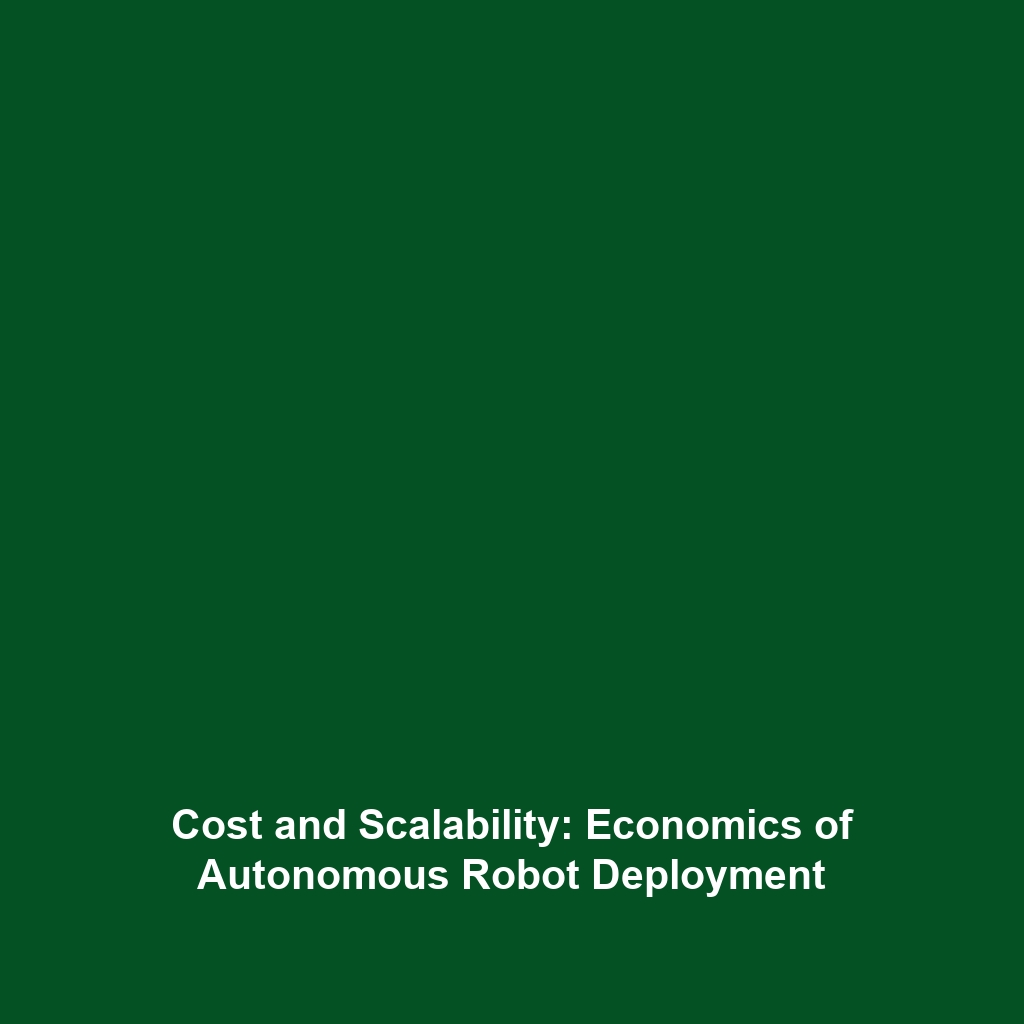Cost and Scalability: The Economics of Developing and Deploying Autonomous Robots
The emergence of autonomous robots has revolutionized many industries, enhancing efficiency and productivity. However, understanding the cost and scalability of developing and deploying these sophisticated systems is critical in determining their widespread adoption. This article explores the economics behind autonomous robots, addressing the significance of cost management and scalability in optimizing performance while ensuring sustainability.
Key Concepts of Cost and Scalability
Several key concepts underpin the economics of autonomous robots:
- Development Costs: These include research, design, engineering, and prototyping expenditures incurred during the creation of autonomous robots.
- Operational Costs: Ongoing expenses such as maintenance, energy usage, and software updates that impact the total cost of ownership.
- Scalability: The ability to efficiently increase production or deployment of autonomous robots without significant cost increases. This principle is critical for businesses aiming to scale operations.
- Return on Investment (ROI): Measuring the profitability of autonomous robotic solutions relative to their initial and ongoing costs.
Applications and Real-World Uses
The intersection of cost and scalability with autonomous robots manifests in a range of applications:
- Manufacturing: Robotics streamline production lines, reducing labor costs and increasing output.
- Logistics: Autonomous delivery drones and vehicles optimize supply chains, decreasing transportation costs.
- Agriculture: Autonomous harvesters and drones enhance crop management, allowing for scalability in food production.
Current Challenges
Despite the promising outlook, several challenges impede the study and implementation of cost and scalability in autonomous robots:
- High Initial Investment: The substantial cost of developing autonomous technology remains a barrier for many companies.
- Regulatory Hurdles: Compliance with safety and operational regulations slows down the deployment of autonomous robots.
- Technological Limitations: Insufficient performance in unpredictable environments poses issues in various applications.
Future Research and Innovations
Future innovations are set to enhance cost and scalability in autonomous robotics:
- AI Advancements: Ongoing improvements in artificial intelligence will enhance decision-making capabilities in autonomous robots.
- Modular Robotics: Future designs may focus on modularization, enabling scalable upgrades and maintenance.
- Cloud Robotics: Leveraging cloud computing for data processing will reduce individual robot costs while facilitating shared intelligence across networks.
Conclusion
Understanding the cost and scalability of developing and deploying autonomous robots is paramount as industries strive for increased automation and efficiency. Businesses that navigate these economic factors effectively are better positioned to harness the benefits of autonomous technologies. For more insights into autonomous robotics, check our related articles on scalability solutions and cost management in technology.

